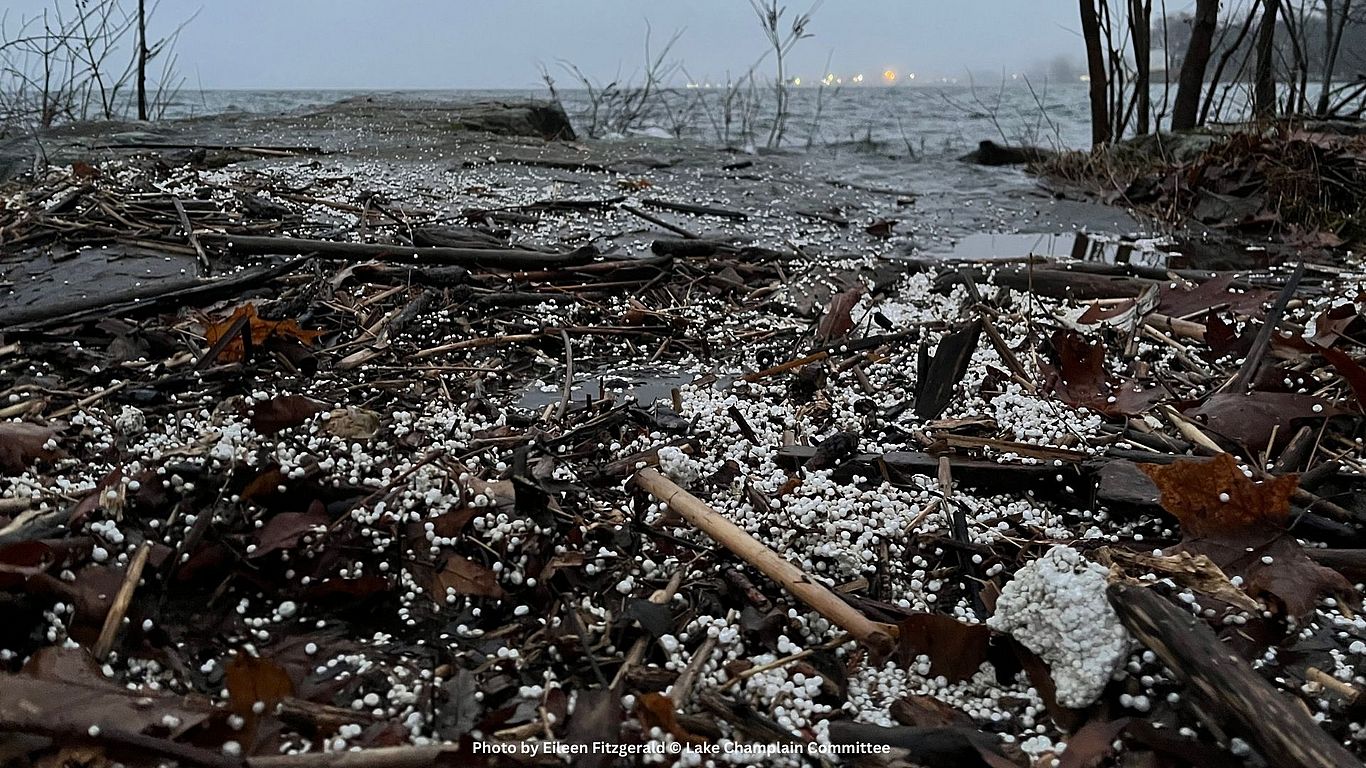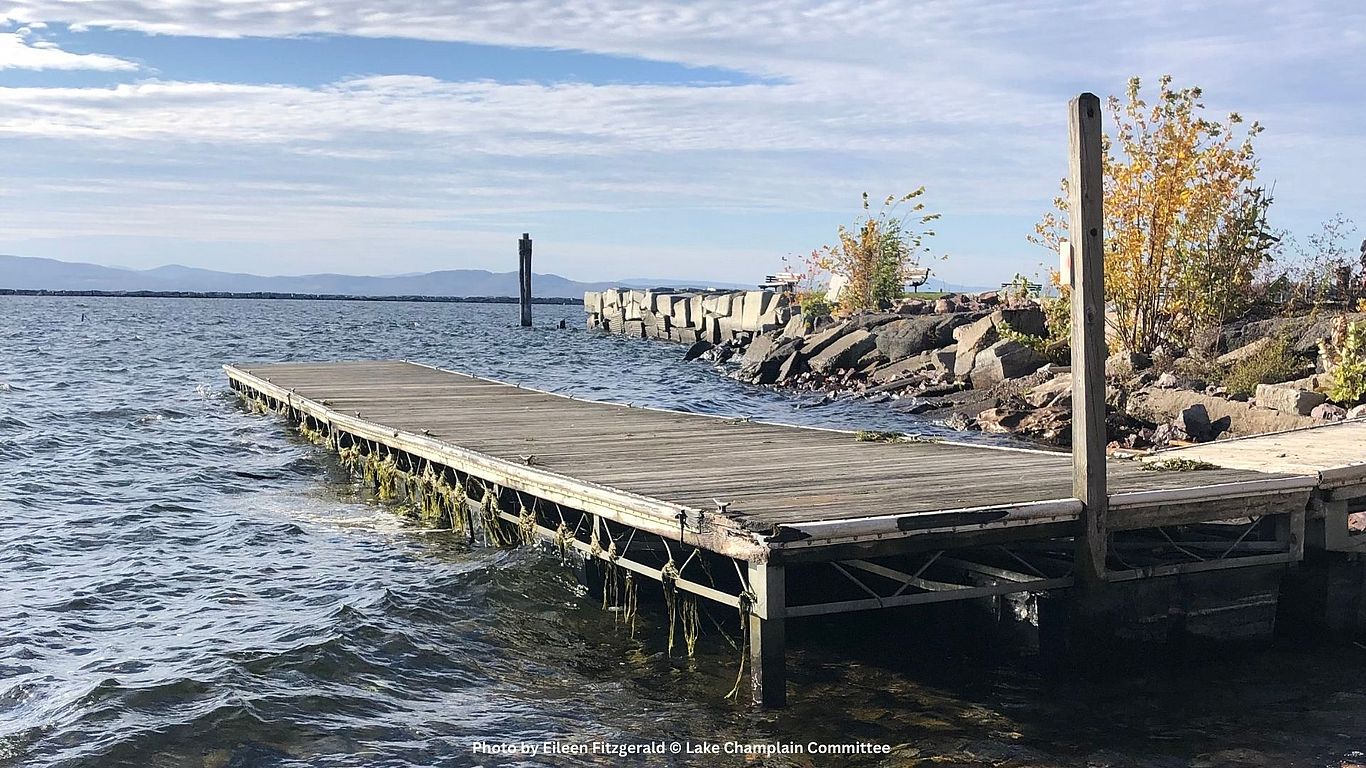Go Home Foam
April 2023
The Stone Age, the Bronze Age, and the Iron Age have come and gone, and some scientists say that we are now living in the Plastic Age. Relative to human history, plastic is new. It is a synthetic material invented in the 19th century and manufactured broadly only after World War II. Polystyrene is one of the most ubiquitous types of plastic. It is made with many connected monomers (molecules that can connect to themselves to form a chain) of styrene and is used in a host of products, often the single-use ones such as disposable cups and cutlery. Polystyrene can be manufactured in its expanded form as a foam called expanded polystyrene [EPS] foam, sometimes referred to as Styrofoam. EPS is inert, meaning that it does not react particularly well with either acidic or basic solutions. This characteristic makes it an effective and popular packaging material, but it also causes it to linger in the natural environment without biodegrading—no natural processes can completely break down polystyrene. Widespread use of EPS foam has had unintended and even existential impacts on the ecological function of waterways around the world, and Lake Champlain is no exception.

Major bans of single-use plastics, including many single-use EPS products, became law in Vermont in 2019 and New York in 2022. While the bans on single-use plastics including EPS foams were major steps in curbing plastic pollution, there is one type of EPS foam that doesn’t just end up in the lake, but is purposefully put in the lake by design: dock foam. More specifically, unencapsulated expanded polystyrene dock foam is an issue in Lake Champlain and other waterbodies with docks for boats. Unencapsulated means that the foam is not contained by any barrier that prevents it from breaking apart into the surrounding water. You have probably encountered this form of plastic: it is bright blue or white, floats on the surface of the water, and is used to support the floatation of docks. While it may seem like a narrow sliver of the overall plastic problem, it is highly abundant in Lake Champlain because when dock foam degrades, it goes directly into the lake. Conservation Law Foundation’s Lake Champlain Lakekeeper Julie Silverman notes that dock foam is the most common type of trash she finds when doing lake cleanups: she has scooped up tens of thousands of tiny white beads of dock foam from Lake Champlain’s beaches after a single storm. Further, in a study from Western Ontario University conducted in October of 2018, researchers collected over 20,000 plastic fragments from 66 beaches spanning all the Great Lakes. They found that EPS foam particles were the single most common type of plastic pollution excluding pre-production plastic pellets.
EPS foam is brittle, and while it does not biodegrade, it does photodegrade, meaning that prolonged sun exposure can break it into smaller pieces. Wave action and wind also batter dock foam and loosen bits of lightweight plastic free from the dock to float about the lake. Large pieces continue to be knocked about in the water and break down to tiny foam specks. The buoyance of EPS foam means that the specks float for a very long time. They are driven by the wind and waves up on to shorelines, where they often get trapped and are frequently concentrated in the spring high water wrack zone. From the perspective of an aquatic animal who eats other orb-shaped foods like fish eggs, or tiny bits that float on the surface of the water such as duckweed, the broken off pieces of dock foam may look appetizing. Bits of EPS foam accumulate in the stomachs of birds, causing bowel obstruction and compaction. As plastics accumulate in the GI tract, they also affect birds’ ability to eat the actual food they need, causing starvation. Even if birds are not consuming enough larger bits of plastic to impact their physical digestive system, studies show that leachate from polystyrene microplastics can cause elevated levels of cholesterol and uric acid in birds, and be toxic to an array of aquatic invertebrates. These are all just the direct effects of EPS foam in aquatic systems—the fossil fuels used in the production of petroleum-based polystyrenes is a whole other can (or foam container) of worms.

Despite the problems with dock foam, docks themselves are still key infrastructure in Lake Champlain. They serve as interface between land and water, and aid in access for many to the lake—boats, swimming, fishing, and just getting close to the water are all facilitated by docks. Not all docks use foam and docks do not need foam to stay afloat. Alternatives such as hollow barrels or air-filled blocks keep docks above water without adding EPS foam to the lake.
While New York and Vermont have both banned many of the common consumer forms of polystyrene—like cups, clamshell containers, and packing peanuts—both states still currently (at the time of this column in early April 2023 anyway) allow for the retail sale and use of ESP foam for docks, even though it is both harmful and unnecessary. The Lake Champlain Committee, Conservation Law Foundation, and other environmental organizations are trying to change this in the Lake Champlain Basin by supporting bills to address the problem of plastic pollution from dock foam. Bill H.373 in Vermont proposes prohibiting the sale of unencapsulated polystyrene foam floatation blocks and loose-bead foam-filled floatation devices in docks, mooring buoys, and other structures on Vermont’s lakes, ponds, and rivers. The proposed bill will also require that docks be maintained and repaired to prevent EPS foam from leaking and disintegrating into the water. Further, any existing unencapsulated foam and loose bead foam floats must be removed and properly disposed of within two years after the bill’s passage. New York’s proposed bill S04974 is similar. Both bills allow for the continued sale and use of encapsulated ESP foam for docks. They just ban the use and sale of exposed, unencapsulated foam, as that is what fragments and enters aquatic systems. It is simple legislation that could make a huge difference in Lake Champlain. The Plastic Age continues on, but any step to curb the amount of plastics entering our waterways is a step in the right direction.
Lake Look is a monthly natural history column produced by the Lake Champlain Committee (LCC). Formed in 1963, LCC is a bi-state nonprofit that uses science-based advocacy, education, and collaborative action to protect and restore water quality, safeguard natural habitats, foster stewardship, and ensure recreational access. You can join, renew your membership, make a special donation, or volunteer to further our work.